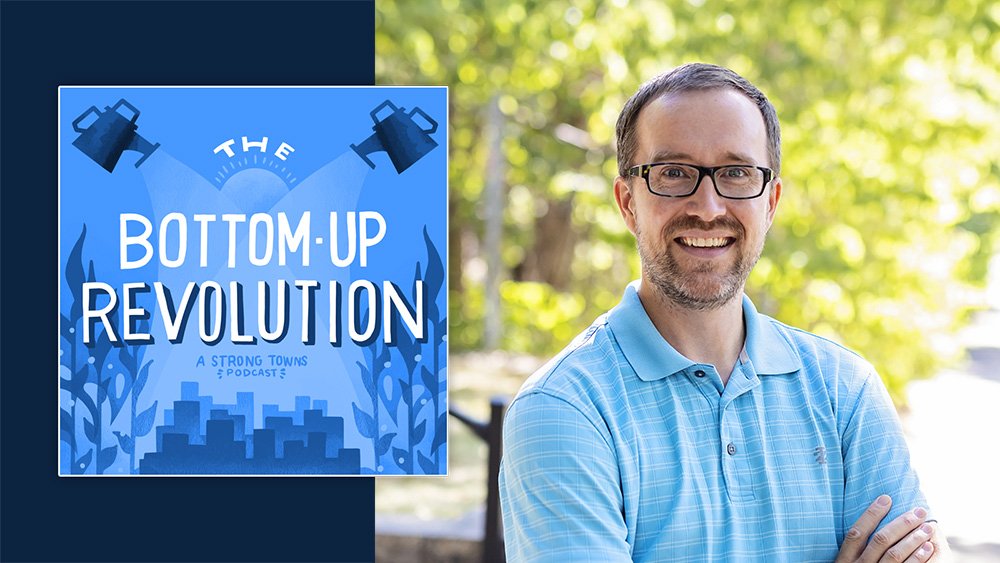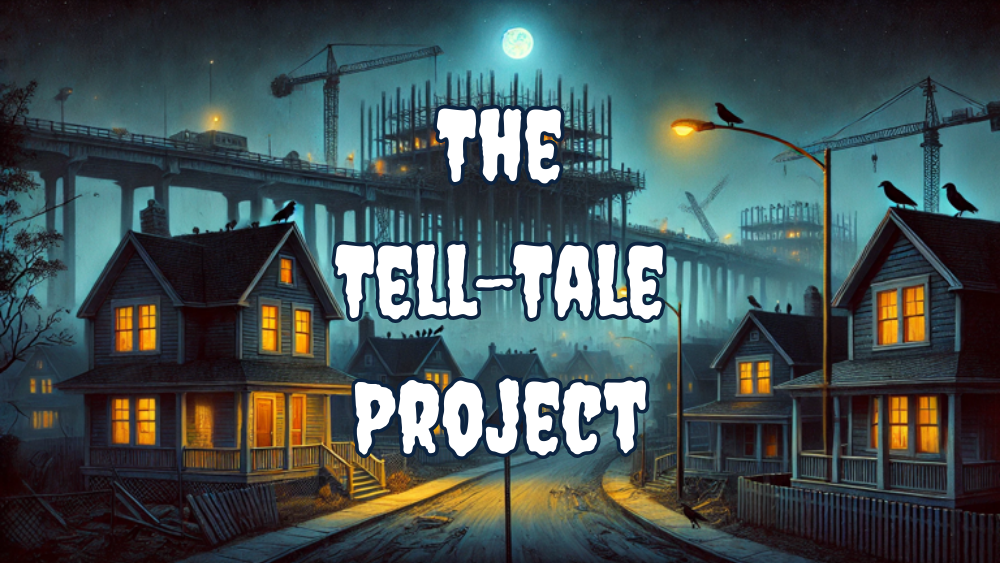What we pay attention to shapes what we love. So, as national problems and politics take center stage, let’s remember to pay attention locally, too. It’s where we can make the biggest impact and build the most endurance for the work ahead.
Read MoreRik Adamski is the founder of a planning firm that strives to help cities create thriving places by drawing on the wisdom of the past. He joins this episode of The Bottom-Up Revolution to discuss his approach to planning and the challenges of implementing a new planning approach in cities.
Read MoreWhen it comes to Halloween adventures, the traditional development pattern always comes out on top. Here’s why.
Read MoreTo make streets safer, we need to change the way people think about car crashes. And we need your help to do it. So, here’s the executive summary of the new “Beyond Blame” report, which shares the most important insights and recommendations from 18 months of Crash Analysis Studios.
Read MoreAmerican bus stops often leave people exposed to the elements without even a place to sit as they wait for their buses to arrive. Here’s how advocates around the country are tackling this problem — and how their cities are responding.
Read MoreAnnexation is a method of city growth in which parcels or developments are added to municipal borders by city officials and staff. It's usually a disaster for a city's finances. But there are a few (very rare) cases where it might be advantageous.
Read MoreThe design of a roadway should reflect its intended use: streets should be designed for safety and building community wealth, while roads should be designed for fast travel. Here’s an example of safe road design and how you could apply it to a stroad.
Read MoreNorm Van Eeden Petersman is the director of membership and development at Strong Towns. He joins today’s episode to discuss his work and share an exciting update about the future of The Bottom-Up Revolution.
Read MoreIn honor of the season, here’s a short adaptation of Edgar Allan Poe’s “The Tell-Tale Heart,” which illustrates the damage that zombie projects — large, ambitious projects that drag out for years or never get off the ground — can do to a place.
Read MoreIn this episode of Upzoned, host Abby Newsham is joined by John Anderson, a builder and developer in Georgia, to discuss the Strong Towns take on “urban homesteading.”
Read MoreFor decades, state and federal highway agencies have justified massive projects with traffic forecast models. But a closer look reveals a troubling pattern of exaggeration, manipulation and outright falsification in these models.
Read MoreFor Asheville, North Carolina, rebuilding might mean questioning some rules and getting creative to allow for the same kind of incremental development that made the city so unique and gave it such a quirky (and productive) local economy.
Read MoreDetroiters have reclaimed 17,000 vacant homes since the COVID-19 pandemic. Today, we’ll take a closer look at one neighborhood whose housing fate has turned on a dime, seemingly thanks to the efforts of one of Detroit's immigrant enclaves.
Read MoreFearing traffic congestion, pollution and water scarcity, the city of Santa Barbara, California, enforced a population cap by preventing the construction of extra housing units. However, 40 years later, the lack of housing is proving to cause these issues more than prevent them.
Read MoreYamini Karandikar is the leader of Strong Towns San Antonio, a Local Conversation in Texas. She joins this episode of The Bottom-Up Revolution to discuss her experience with conducting a Crash Analysis Studio and the impact it’s had on her community.
Read MoreAsheville's River Arts District, North Carolina's flagship for authentic incrementalism, was destroyed by Hurricane Helene. Here's why it's so important that people continue embracing incrementalism to bring it back.
Read MoreIn this episode of Upzoned, co-hosts Abby Newsham and Chuck Marohn discuss the problems with common natural disaster responses, such as managed retreat or rebuilding disaster areas to be more fortified, and suggest some alternatives.
Read MoreThe Northern Beltline project has been haunting Alabama for over 50 years, draining money, time and energy from other more productive and desired projects. Here’s how it came about — and why it refuses to stay dead.
Read MoreIt's time to embrace a new method for creating safer streets, but it can be daunting to move from supporting an idea to actually executing it. Here are people's top three concerns about conducting a Crash Analysis Studio and why you don't have to worry about them.
Read MoreOn this episode of the Strong Towns Podcast, Chuck discusses street safety with Melany Alliston, a project manager and civil engineer with Toole Design.
Read More



















